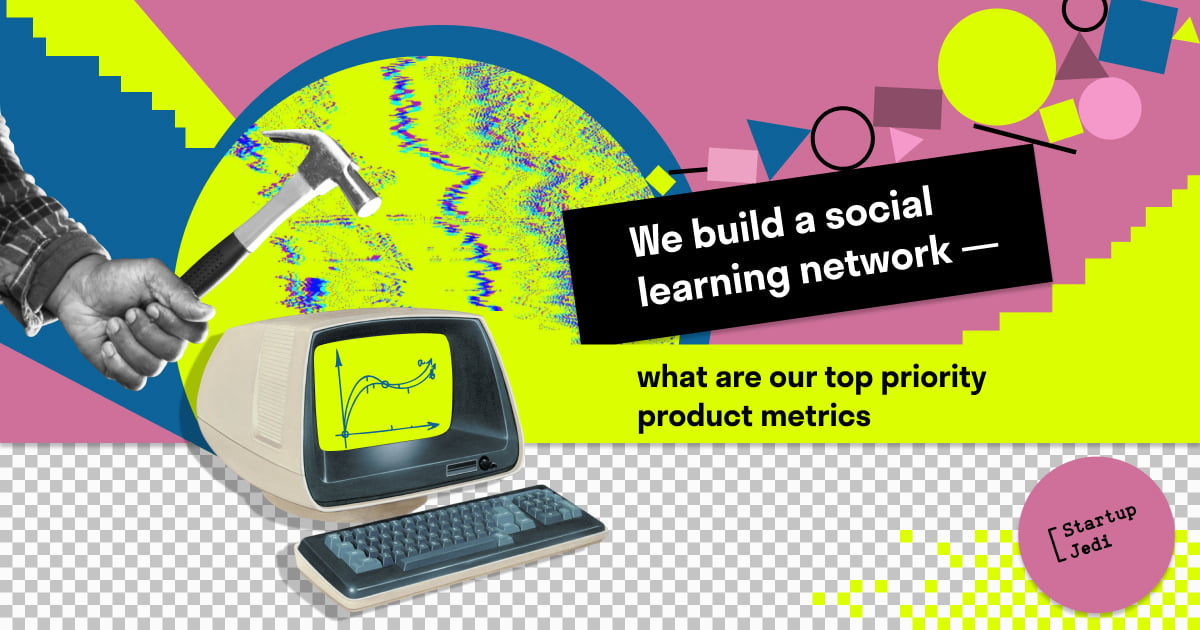
Startup Jedi
We talk to startups and investors, you get the value.
Yuri Shlaganov — Rocket DAO expert, CEO of EduDo startup, author of the #underZtanding column shares important insights about which metrics the startup has chosen as priorities when searching for its Product-Market Fit.

Startup Jedi
We talk to startups and investors, you get the value.
A couple of monthsago, we’ve released an EduDo MVP and started looking for the “mystical” Product-Market Fit. As some VC classics wrote, PMF is a very intangible thing, but you always feel whether you have it or not. Naturally, you need to test product hypotheses and make right conclusions based on metrics, among which there should always be a number of top priority ones. In this article, I want to share with you, which metrics we have chosen as our top priority.
...
Brief introduction for those who haven’t heard about us. We build EduDo — a community-driven platform with short, interactive, insightful content. We want EduDo to be opened by users multiple times a day, filling up these 10–15 minutes time slots occurring while in the metro, between meetings and tasks, etc. The Quibi example showed that users are not ready to consume very high quality and expensive, albeit bite-sized, content on the go. They simply do not feel the right to consume it superficially. Thus, if we want our application to be used on the go, the content inside it should not oblige users to anything.
Our main content challenge is finding the right balance between the insightfulness of the content and the ease of its consumption. Therefore, we are moving towards the UGC (User-generated Content) story.
Therefore, we should choose UGC-content platform metrics as our top priority. In addition to the common for all projects DAU, WAU, MAU, and their dynamics, we focus on the following ones:

The platform does not make sense without a decent retention — in fact, it shows whether users find value there or not.
The main retention metric is, of course, 30D Retention, which shows the percentage of users that keep coming back to the app on the 30th day after the first launch. But at the very early stages it’s quite problematic to measure on a sufficient sample and draw the right conclusions on D30 Retention (especially of the latter, more “polished” versions), we now focus on D1 and D7 Retention, and their dynamics.
As one of my ex-VC colleagues Almas Abulkhairov wrote in his blog, Snapchat’s 30D Retention is 20%, and Instagram’s is 24–25%. Based on these and other figures, we can set our D1 and D7 Retention goals.

To increase the overall Retention, it is very important to understand the user segments that stand out positively in terms of getting back to the app, and then to focus on such users or actions they perform. For example, at the beginning of Facebook’s journey, Mark Zuckerberg noticed that Retention of those users who added 7 or more people as friends is x-times higher than the average one. That’s why he introduced some product features to motivate users to add friends as quickly as possible. Therefore, in addition to the general Retention, we also calculate Retention by segments depending on various parameters — geography, age, language and actions performed in the app.

Everything is pretty obvious here — if a user spends a lot of time on the platform, she finds great value that can be monetized well in the future. For example, TikTok users spend 45–52 minutes a day on the platform.
Same story, to improve your overall Daily Spent Time, it’s important to notice the segments that spend the most time in the app, find something common among them, and adapt the product accordingly. Therefore, we also count Daily Spent Time by segments depending on geography, age, language and actions performed in the application.
I believe, it is very important to find the right focus in the early stages, especially regarding product metrics. If you have a dozen top priority metrics, you don’t have top priority metrics. Therefore, we chose only 2 main ones, since we believe that they will help us figure out if we are moving in the right direction towards PMF.
Wish you focus and good luck! :)
Facebook: facebook.com/StartupJedi/
Telegram: t.me/Startup_Jedi
Twitter: twitter.com/startup_jedi
Comments